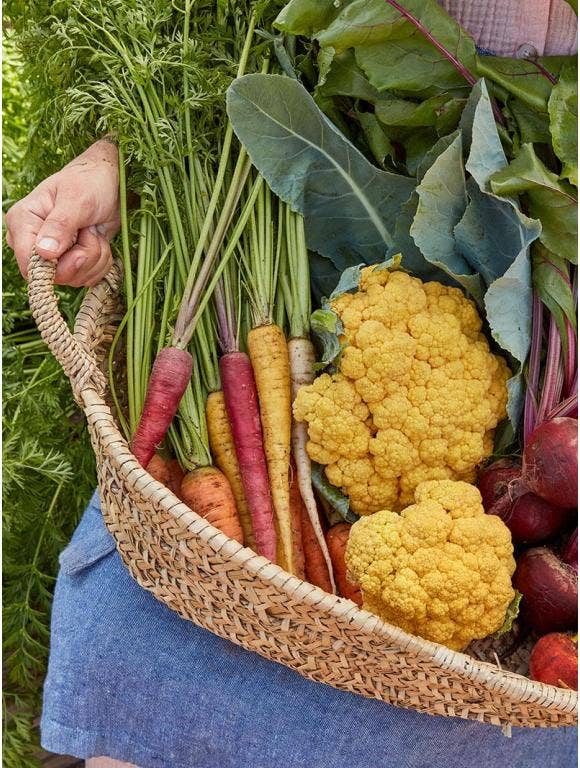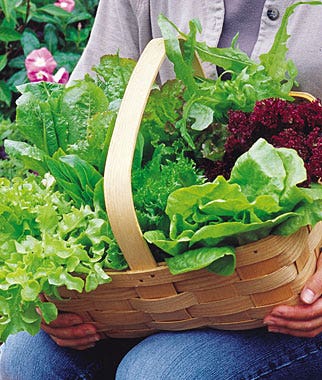
Our trial gardens at Fordhook Farm are massive. We grow our vegetables and flowers in many systems, from traditional rows to raised beds to intense square foot gardening plots. Over the years, our trial team has developed volumes of documentation on these experiences, and listed below are what we feel are the best tips for success in fall gardening.
Tip Number 1
Planning. While still fresh in your mind, create a diary of the successes and disappointments of the past spring and summer gardening. Note the varieties you grew and the timeline for that production (sow date, transplant and harvest). Location of what you grew is very important, so that next year you rotate the crops to new positions to not allow pathogen populations to build up. What did you not grow this past season that you want to try next year? Did you have enough organic matter to top dress your plantings to avoid using commercial fertilizers? Was your garden organized in a way that you felt you achieved maximum production, or should you be looking at adding structures (TunLcovers, weed barrier fabric, vegetable cages, irrigation and trellis netting) to improve fruit quality and increase yields?
Tip Number 2
Prepare for Fall Planting. As soon as possible, clean up the vegetables that are finished producing, and in one of those areas, prepare for fall planting of salad greens of all types. Once the vegetation is removed, work up the area with a tiller or hand tools and remove all pieces of foliage or root matter. Add as much compost to the planting area as possible, and work the compost into the soil. Garden soils should be worked to a depth of 8-12" to allow roots to establish. Level the planting area as smooth as possible and water the area well, looking for where water may puddle, then level smooth with a hard rake. Most salad greens are planted to a depth of 1/4" in rows that are spaced 12-18" apart. Sow at least 20 seeds per foot, and after germination, thin to 3-4" in the row. Thinned seedlings can be transplanted to other garden locations, or enjoy a tasty snack. Keep the salad greens moist; never allow them to dry out. Roots are shallow, so frequent watering is a must.
Tip Number 3
Soil Quality. Fall is the perfect time to condition your soil for the next season. Start by sending a sample of your soil to a quality soil lab. At a 6" depth in the soil, take at least 10 samples from various locations throughout your garden. By performing a fall soil test, the results will help you understand the success and disappointments of the past season and where improvement needs to begin. Consider sowing a cover crop into the garden that will not be used for fall vegetables. A cover crop will add important organic matter, prevent weeds from germinating in bare ground, and protect your valuable topsoil from eroding during the winter. When you receive your soil test, pay attention to the pH level, and adjust to a range of 6.0-7.0 which is ideal for most vegetable gardens. A pH below or above this range will bind important nutrients that are needed for plant growth.
Tip Number 4
Sanitation. During the course of the gardening season, many pathogens visited your garden without you knowing it. Some get established during times of stress, when conditions are too dry, too wet and/or too cloudy. At Fordhook, each and every tool and garden helper is given a 5% bleach/water solution fall bath. This includes tillers, lawn mowers, hand tools, hoses, bean poles, tomato cages, containers and even gardening shoes. This elimination of unfriendly pathogens is preventive medicine for your garden before you begin a new season.
Tip Number 5
Making Lots of Compost. Every successful garden begins and ends with a bountiful supply of rich, naturally nutritional compost, and it is very easy to do. Evaluate your needs, and set a goal that you will try to make a specific quantity of compost by next spring. You can make compost using a manufactured bin or by using inexpensive, rough cut (untreated) lumber. Everything organic can be used to make compost, including discarded kitchen scraps, lawn clippings, leaves (shredded is best) and locally available products such as horse manure with straw, municipal mulch and graded topsoil. The key to good compost is good aging (at least 6 months old), turning every 30 days so the compost heats up (decomposes), then allowing it to aerate. Adding lime at each turn helps keep the pH in check and helps with the decomposition. Water is important as well. During dry times, water the compost so it becomes moist to the touch.
Each garden is different, and each gardener forms a strategy for success. We hope our 5 Fall Gardening Tips provide "Food for Thought" to help make your gardening experiences even more successful!



